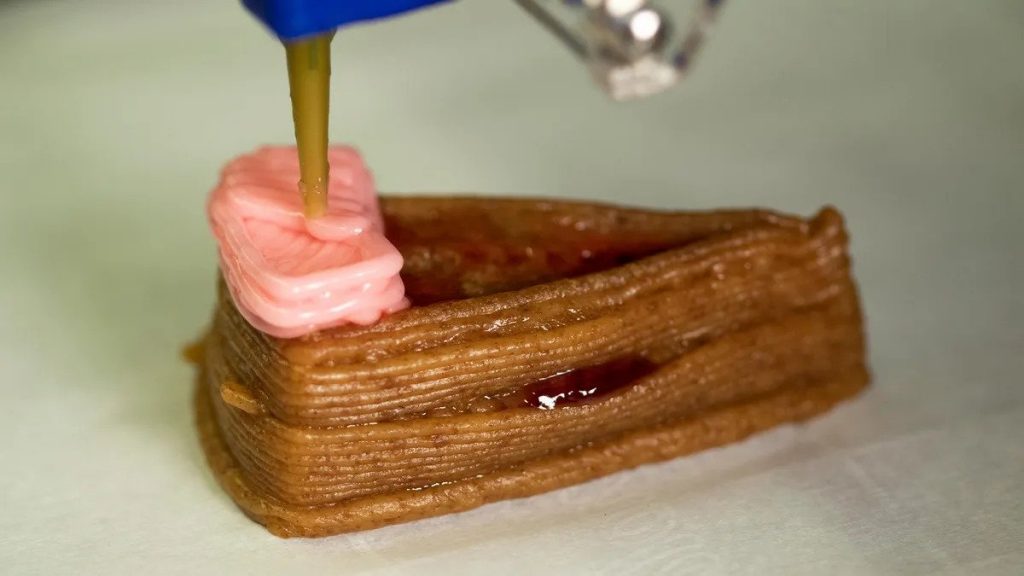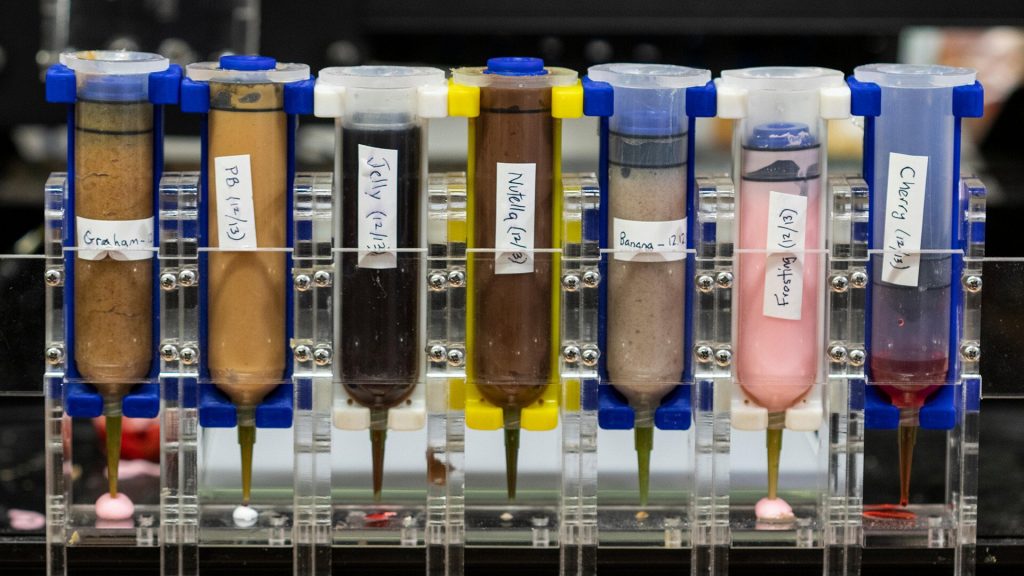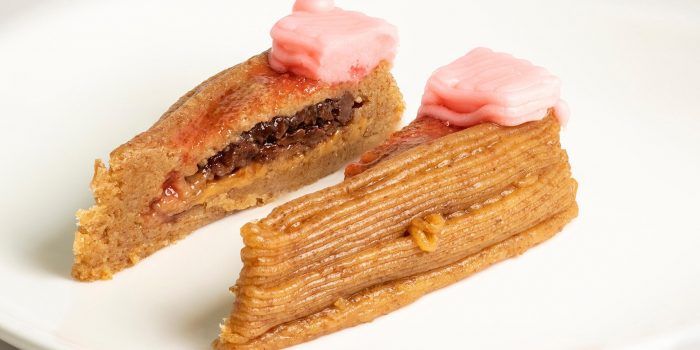Welcome to the future of food, where the cheesecake before you is unlike any other you’ve tasted. Its distinct, layered appearance makes it clear that every ingredient is present and accounted for, creating a unique experience. It’s almost magical.
This culinary sorcery is made possible by a team at Columbia University’s Creative Machines Lab, who have been perfecting cutting-edge kitchen appliances for the past few years. The appliance is a 3D printer equipped with lasers that can cook and customize any food item to your heart’s desire.
In a new perspective article published today by npj Science of Food, lead author Jonathan Blutinger, a postdoctoral fellow in the lab, discusses the advantages and drawbacks of 3D printed food with Professor Christen Cooper, Pace University Nutrition and Dietetics.
In the past, this technology was limited to printing uncooked ingredients and couldn’t come close to creating something as delicious as your dessert.

However, thanks to the pioneering work of Hod Lipson, a mechanical engineering professor and roboticist at Columbia University, and his team, a new 3D printing device has been developed that can cook and print multi-ingredient dishes with laser precision.
Using edible food inks such as peanut butter, Nutella, and strawberry jam, this system created a mouth-watering cheesecake that was both visually stunning and tasty. The team behind this technology believes that precision printing of multi-layered food items could revolutionize the food industry by producing more customizable foods, improving food safety, and allowing consumers to better control their nutrient intake.

“Because 3D food printing is still a nascent technology, it needs an ecosystem of supporting industries such as food cartridge manufacturers, downloadable recipe files, and an environment in which to create and share these recipes,” Blutinger said in a statement. “Its customizability makes it particularly practical for the plant-based meat market, where texture and flavor need to be carefully formulated to mimic real meats.”
One could say that 3D food printing churns out processed food, but “perhaps the silver lining will be, for some people, better control and tailoring of nutrition-personalized nutrition,” said Cooper. ” It may also be useful in making food more appealing to those with swallowing disorders by mimicking the shapes of real foods with the pureed texture foods that these patients—millions in the U.S. alone—require,” he added.


